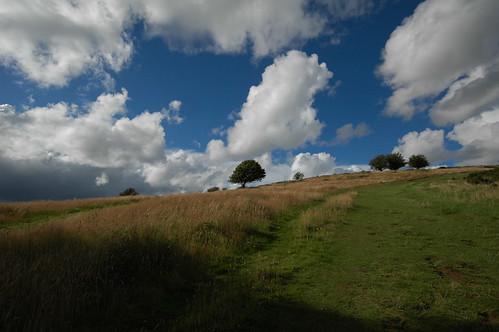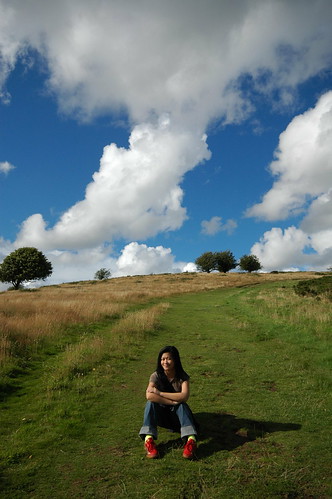DAY 1
DAY 2 Part One
DAY 2 Part Two
DAY 3 Part One
After Kiriwon village, we went to Wat Phra Mahathat Woromaha Vihan in Nakhon Si Thammarat town. Also known as the temple with no shadows, it is the most important temple in Southern Thailand. I borrowed a jacket from See Tho’s assistant because I thought I was revealing a little too much flesh, heh.
The moment we stepped into the temple’s compound, we were greeted by a huge flock of pigeons.
It was right out of a Hitchcock’s film!
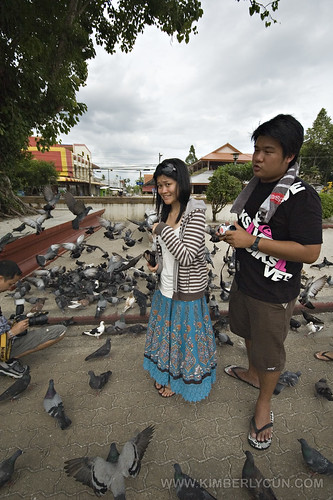
Me and Nigel amongst the feathered ones. TAKEN BY KY.
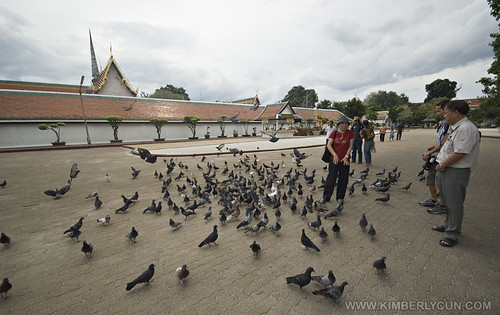
Birds!

See Tho being friendly with the birdies.
Apparently the year that shadows were seen at the temple was the year Kiriwon was hit by the floods.
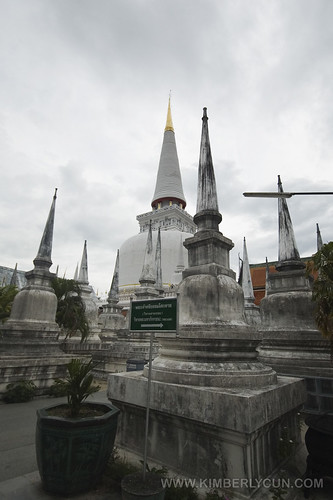
Temple with no shadows and its gold covered tip.
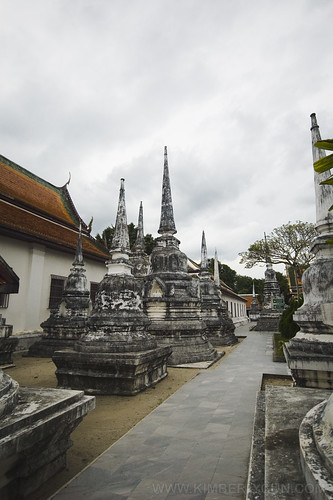
Hindu-style Chedi-s.

Gold leaves.
At the end of the temple tour, I got myself a Fanta Orange.
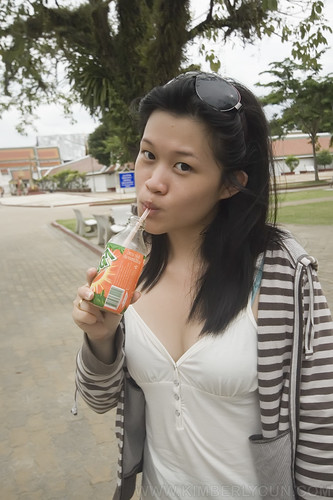
Sipping Fanta Orange. Taken by KY.
After a day of learning and pseudo pilgrimage, we were treated to retail therapy as a reward. We arrived at a street in Nakhon Si Thammarat town known for silver jewelleries.

All these shops are selling silver jewelleries.
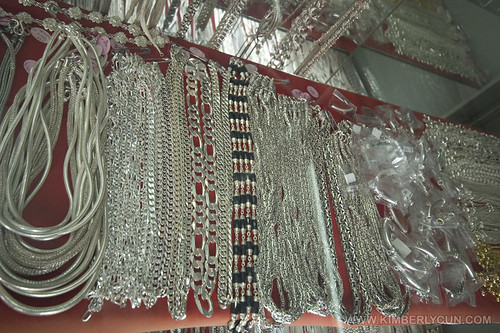
Blings.
I bought a couple of earrings as souveniers. Alas, it’s dinner time. From Nakhon Si Thammarat we headed towards Surat Thani town for food, which was not very far.
The path heading towards the restaurant was peppered with stalls selling fresh and salted seafood. There were also many stalls selling fresh oysters. Huge ones and dirt cheap!

15-5 Baht per oyster! That’s RM 1.50 for one XL sized oyster 0_0.
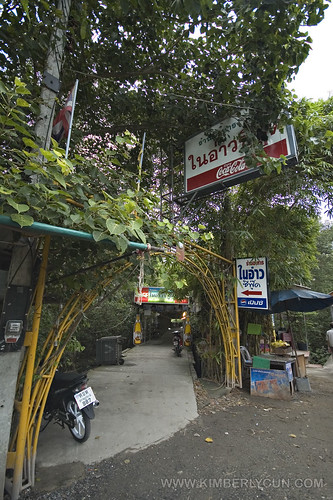
I’d love to name the restaurant but it’s all Thai! Just turn left if you happened to stumbled upon this place. Hehe
There were houses on stilts on both sides of the bridge which connected the restaurant to the bank.

Houses on stilts.
And if you looked down, you’d see a sea of empty oyster shells.
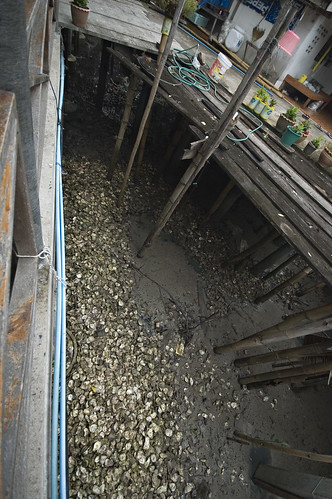
Empty oyster shells.
Of course, we had to have oysters for dinner. See Tho advised us against eating them raw as sometimes, the sources are quite suspicious.

Steamed oysters.
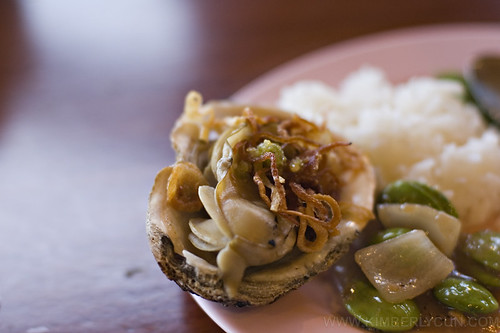
Garnished with chilli, deep fried onions and herbs.
We also had the customary crabs, prawns, fish, tomyam and vegetables. As usual, See Tho had pulled it off again as dinner was par excellence.
We ended Day 3 with a trip to Ta Pi River to watch fireflies. We got into a charming long boat, put on the life jackets and headed into the dark. According to this site, long boats can be chartered at 300 Baht an hour at Bandon Pier.
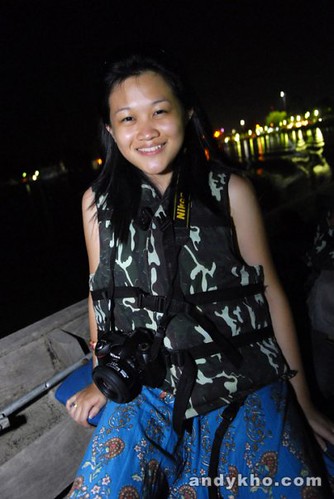
Could I look anymore tired than this? PICTURE BY ANDY.

Three stooges. Me, Kellster and Nigel. PICTURE BY ANDY.
It was an incredible experience! I have seen fireflies in Sabah but the experience was nothing close to what I had in Surat Thani. The trees literally lit up like Christmas trees. There were so many of them!!
Due to the lack of lighting, it was near impossible to take any picture. This is about the closest I could get that evening.
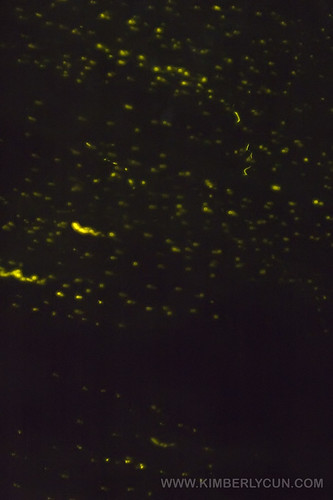
If you’re in Surat Thani, you must absolutely check out the fireflies.
We retired to 100 Islands Resort, a humble hotel in Surat Thani. The best thing about the place was 24-hour Internet for 100 Baht!
Day 4 soon! :)
